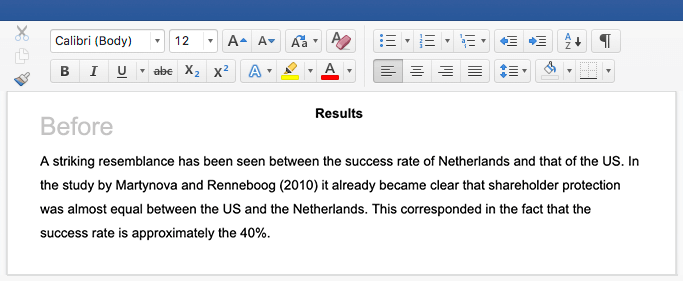Your thesis statement might mention several aspects of your topic, but they should all add up to a coherent whole, expressing one main idea.
A thesis statement is a sentence that sums up the central point of your paper or essay. It usually comes near the end of your introduction.
Everything mentioned in your thesis statement must be supported and explained in the rest of your paper.
A good thesis statement is short and sweet—don’t use more words than necessary. State your point clearly and directly in one or two sentences.
Concise

Particularly in an argumentative essay, your thesis statement should be something that others might question or disagree with.
Your thesis shouldn’t be a simple statement of fact that everyone already knows. A good thesis statement is a claim that requires further evidence or analysis to back it up.
- It gives your writing direction and focus.
- It gives the reader a concise summary of your main point.
The best thesis statements are concise, contentious and coherent.

Turn off your email and phone alerts when you’re writing.
Don’t wait to be inspired to write. Instead, go out and look for inspiration.
The details of each stage will vary slightly depending on your field, but for most thesis writers the stages are, first, idea collection, second, editing and data analysis, and third, polishing.
When I started writing my thesis, I thought I had to begin with the abstract, then the introduction, then an in-depth literature search, then chapter one, chapter two, on and on all the way to the conclusion.
6. Never Write “work on thesis” In Your Calendar

My 15-hour days turned into 18-hour days fueled by junk food and soda.
Listen to music that puts you in the mood to write. Watch a short video that motivates you to take action. Visualize all the things you will do once your thesis is done.
The most effective way to meet with your advisor is to schedule meetings far in advance and come to every meeting with a clear agenda.
If your advisor is a difficult person, continue to be proactive about planning meetings and developing solutions to your problems.

A thesis is a statement, theory, argument, proposal or proposition, which is put forward as a premise to be maintained or proved. It explains the stand someone takes on an issue and how the person intends to justify the stand. It is always better to pick a topic that will be able to render professional help, a topic that you will be happy to talk about with anybody, a topic you have personal interest and passion for, because when writing a thesis gets frustrating personal interest, happiness and passion coupled with the professional help it will be easier to write a great thesis (see you through the thesis). One has to source for a lot of information concerning the topic one is writing a thesis on in order to know the important question, because for you to take a good stand on an issue you have to study the evidence first.
- Then collecting and analyzing data, after data analysis, the result of the analysis should be written and discussed, followed by summary, conclusion, recommendations, list of references and the appendices
- The last step is editing of the thesis and proper spell checking.
End with a bang, not a whimper. First things first, and save the best for last. First and last impressions persist. Arrange your chapters so that your first and last experimental chapters are sound and solid.
The literature review: The literature review is often the most voluminous aspects of a thesis because it reviews past empirical and theoretical literature about the problem being studied. This section starts by discussing the concepts relevant to the problem as indicated in the topic, the relationship between the concepts and what discoveries have being made on topic based on the choice of methodologies. The validity of the studies reviewed are questioned and findings are compared in order to get a comprehensive picture of the problem. The literature review also discusses the theories and theoretical frameworks that are relevant to the problem, the gaps that are evident in literature and how the thesis being written helps in resolving some of the gaps.
Introduction
The introduction: The introduction is the first section and it provides as the name implies an introduction to the thesis. The introduction contains such aspects as the background to the study which provides information on the topic in the context of what is happening in the world as related to the topic. It also discusses the relevance of the topic to society, policies formulated success and failure. The introduction also contains the statement of the problem which is essentially a succinct description of the problem that the thesis want to solve and what the trend will be if the problem is not solved. The concluding part of the statement of problem ends with an outline of the research questions. These are the questions which when answered helps in achieving the aim of the thesis. The third section is the outline of research objectives. Conventionally research objectives re a conversion the research questions into an active statement form. Other parts of the introduction are a discussion of hypotheses (if any), the significance of the study, delimitations, proposed methodology and a discussion of the structure of the study(RE: write a thesis or writing a thesis).
The methodology: The third section is a discussion of the research methodology adopted in the thesis and touches on aspects such as the research design, the area, population and sample that will be considered for the study as well as the sampling procedure. These aspects are discussed in terms of choice, method and rationale. This section also covers the sub- section of data collection, data analysis and measures of ensuring validity of study. It is the chapter 3. This chapter explains the method used in data collection and data analysis. It explains the methodology adopted and why it is the best method to be used, it also explains every step of data collection and analysis. The data used could be primary data or secondary data. While analysing the data, proper statistical tool should be used in order to fit the stated objectives of the thesis. The statistical tool could be
Spot errors early. A well-written “Technical Report” will force you to think about what you have done, before you move on to something else. If anything is amiss, you will detect it at once and can easily correct it, rather than have to re-visit the work later, when you may be pressured for time and have lost touch with it.

A thesis is a statement, theory, argument, proposal or proposition, which is put forward as a premise to be maintained or proved. It explains the stand someone takes on an issue and how the person intends to justify the stand. It is always better to pick a topic that will be able to render professional help, a topic that you will be happy to talk about with anybody, a topic you have personal interest and passion for, because when writing a thesis gets frustrating personal interest, happiness and passion coupled with the professional help it will be easier to write a great thesis (see you through the thesis). One has to source for a lot of information concerning the topic one is writing a thesis on in order to know the important question, because for you to take a good stand on an issue you have to study the evidence first.
- Then collecting and analyzing data, after data analysis, the result of the analysis should be written and discussed, followed by summary, conclusion, recommendations, list of references and the appendices
- The last step is editing of the thesis and proper spell checking.
End with a bang, not a whimper. First things first, and save the best for last. First and last impressions persist. Arrange your chapters so that your first and last experimental chapters are sound and solid.
The literature review: The literature review is often the most voluminous aspects of a thesis because it reviews past empirical and theoretical literature about the problem being studied. This section starts by discussing the concepts relevant to the problem as indicated in the topic, the relationship between the concepts and what discoveries have being made on topic based on the choice of methodologies. The validity of the studies reviewed are questioned and findings are compared in order to get a comprehensive picture of the problem. The literature review also discusses the theories and theoretical frameworks that are relevant to the problem, the gaps that are evident in literature and how the thesis being written helps in resolving some of the gaps.
Introduction
The introduction: The introduction is the first section and it provides as the name implies an introduction to the thesis. The introduction contains such aspects as the background to the study which provides information on the topic in the context of what is happening in the world as related to the topic. It also discusses the relevance of the topic to society, policies formulated success and failure. The introduction also contains the statement of the problem which is essentially a succinct description of the problem that the thesis want to solve and what the trend will be if the problem is not solved. The concluding part of the statement of problem ends with an outline of the research questions. These are the questions which when answered helps in achieving the aim of the thesis. The third section is the outline of research objectives. Conventionally research objectives re a conversion the research questions into an active statement form. Other parts of the introduction are a discussion of hypotheses (if any), the significance of the study, delimitations, proposed methodology and a discussion of the structure of the study(RE: write a thesis or writing a thesis).
The methodology: The third section is a discussion of the research methodology adopted in the thesis and touches on aspects such as the research design, the area, population and sample that will be considered for the study as well as the sampling procedure. These aspects are discussed in terms of choice, method and rationale. This section also covers the sub- section of data collection, data analysis and measures of ensuring validity of study. It is the chapter 3. This chapter explains the method used in data collection and data analysis. It explains the methodology adopted and why it is the best method to be used, it also explains every step of data collection and analysis. The data used could be primary data or secondary data. While analysing the data, proper statistical tool should be used in order to fit the stated objectives of the thesis. The statistical tool could be
Spot errors early. A well-written “Technical Report” will force you to think about what you have done, before you move on to something else. If anything is amiss, you will detect it at once and can easily correct it, rather than have to re-visit the work later, when you may be pressured for time and have lost touch with it.
Everything mentioned in your thesis statement must be supported and explained in the rest of your paper.
A good thesis statement is short and sweet—don’t use more words than necessary. State your point clearly and directly in one or two sentences.
Your thesis statement might mention several aspects of your topic, but they should all add up to a coherent whole, expressing one main idea.
A thesis statement is a sentence that sums up the central point of your paper or essay. It usually comes near the end of your introduction.
Contentious

You should come up with an initial thesis, sometimes called a working thesis, early in the writing process. As soon as you’ve decided on your essay topic, you need to work out what you want to say about it—a clear thesis will give your essay direction and structure.
Your thesis shouldn’t be a simple statement of fact that everyone already knows. A good thesis statement is a claim that requires further evidence or analysis to back it up.
A thesis statement is a sentence that sums up the central point of your paper or essay. Everything else you write should relate to this key idea.
Your thesis will look a bit different depending on the type of essay you’re writing. But the thesis statement should always clearly state the main idea you want to get across. Everything else in your essay should relate back to this idea.

All of the above essay types need a thesis statement that includes a proposition (a statement which answers the question or addresses the title).
Beethoven was unable to hear his work, as he was deaf, so it is evident that he musically conceptualised the notes to compose.
(Slightly less wordy.)
Analytical thesis statement:
A close consideration of the voter demographics, the populist nature of political messages leading up to the referendum, and the history of Britain’s status in the EU, will demonstrate that Brexit was primarily motivated by the machinations of the Right.
“Matching the scope given in your thesis statement to the depth you provide in your essay is a very effective way to ensure precision.”
The purpose of the essay

Long sentences can also lead to a failure to make subject and verb agree, like in the next thesis statement example from a school Geography essay:
For the argumentative essay, you need to add an overview of your reasoning. Another example:
For the expository essay, you need to add an overview of the details of the conclusion. Let’s look at an example:
